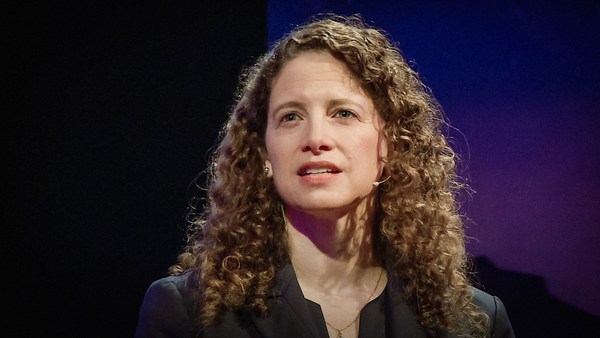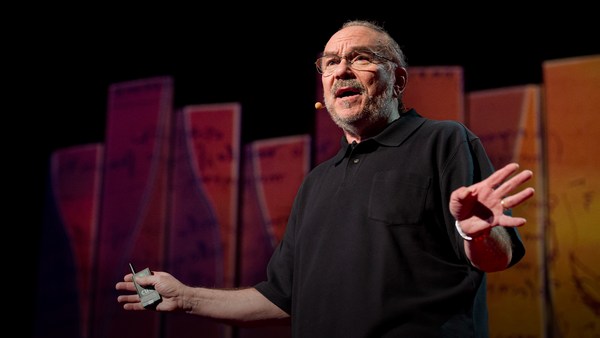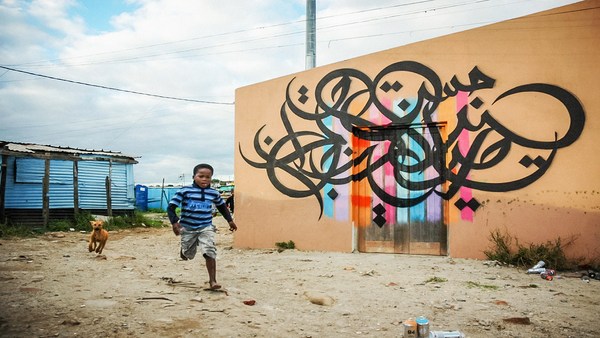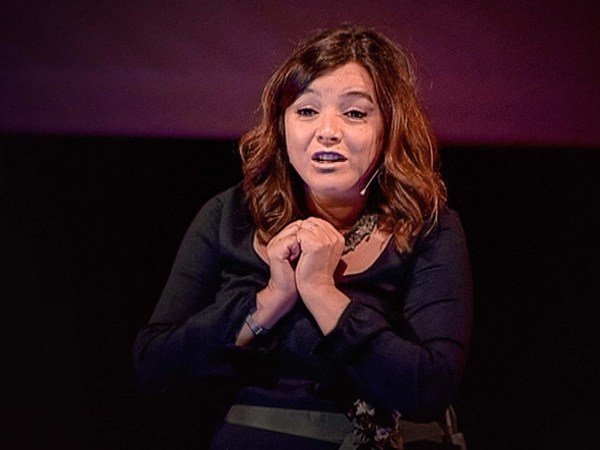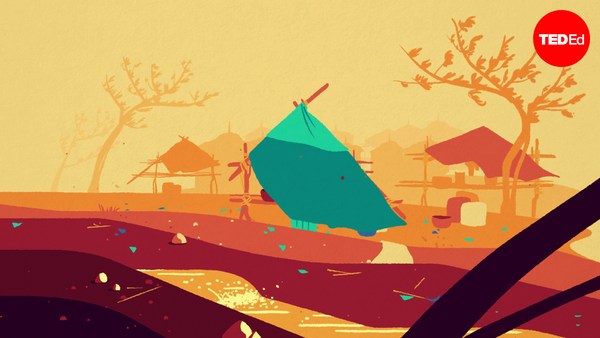I come from Egypt, which is also called Umm al-Dunya, the Mother of the World. It's a rich country filled with stories of rebellion, stories of civilizational triumph and downfall and the rich, religious, ethnic, cultural and linguistic diversity.
Growing up in such an environment, I became a strong believer in the power of storytelling. As I searched for the medium with which to tell my story, I stumbled upon graphic design. I would like to share with you a project of how graphic design can bring the Arabic language to life. But first, let me tell you why I want to do this.
I believe that graphic design can change the world. At least in my very own city of Cairo, it helped overthrow two separate dictators. As you can see from those photos, the power and potential of graphic design as a tool for positive change is undeniably strong. Egypt's 2011 revolution was also a grassroots design revolution. Everyone became a creator. People were the real designers and, just overnight, Cairo was flooded with posters, signage, graffiti. Visual communication was the medium that spoke far louder than words when the population of over 90 million voices were suppressed for almost 30 years.
It was precisely this political and social suppression, coupled with decades of colonialism and miseducation that slowly eroded the significance of the Arabic script in the region. All of these countries once used Arabic. Now it's just the green and the blue. To put it simply, the Arabic script is dying. In postcolonial Arab countries functioning in an increasingly globalized world, it is a growing alarm that less and less people are using the Arabic script to communicate.
As I was studying my master's in Italy, I noticed myself missing Arabic. I missed looking at the letters, digesting their meaning. So one day, I walked into one of the biggest libraries in Italy in search of an Arabic book. I was surprised to find that this is what they had under the category of "Arabic/Middle Eastern books."
(Laughter)
Fear, terrorism and destruction. One word: ISIS. My heart ached that this is how we are portrayed to the world, even from a literary perspective. I asked myself: Whatever happened to the world-renowned writers like Naguib Mahfouz, Khalil Gibran, iconic poets like Mutanabbi, Nizar Qabbani? Think about this. The cultural products of an entire region of the world, as rich, as diverse, have been deemed redundant, if not ignored altogether. The cultural products of an entire region of the world have been barred from imparting any kind of real impact on global media productions and contemporary social discourse. And then I reminded myself of my number one belief: design can change the world. All you need is for someone to catch a glimpse of your work, feel, connect.
And so I started. I thought about how can I stop the world from seeing us as evil, as terrorists of this planet, and start perceiving us as equals, fellow humans? How can I save and honor the Arabic script and share it with other people, other cultures? And then it hit me: What if I combined the two most significant symbols of innocence and Arab identity? Maybe then people could resonate. What's more pure, innocent and fun as LEGO? It's a universal child's toy. You play with them, you build with them, and with them, you imagine endless possibilities.
My eureka moment was to find a bilingual solution for Arabic education, because effective communication and education is the road to more tolerant communities. However, the Arabic and Latin scripts do not only represent different worlds but also create technical difficulties for both Eastern and Western communities on a daily basis.
There are so many reasons why Arabic and Latin are different, but here are some of the main ones. Yes, both use upward and downward strokes, but have completely different baselines. Arabic tends to be more calligraphic and connectivity is important to the Arabic language, whose letters have to be mostly joined in order to articulate a given word. It also uses an entirely different system of punctuation and diacritics. But most importantly, Arabic has no capital letters. Instead it has four different letter forms: initial, medial, isolated and final. I want to introduce the Arabic language to young learners, foreign speakers, but most importantly help refugees integrate to their host societies through creating a bilingual learning system, a two-way flow of communication. And I called it "Let's Play."
The idea is to simply create a fun and engaging way of learning Modern Standard Arabic through LEGO. These are the two words. "Let's Play." Every colored bar marks an Arabic letter. As you can see, the letter is explained in form, sound and examples of words in function, in addition to the equivalent in Latin. Together, they form a fun pocket book with the 29 Arabic letters and the four different forms, plus a 400-word dictionary.
So this is how the page looks like. You have the letter, the transliteration in Latin and the description underneath.
I'll take you through the process. So first in my tiny studio in Florence, I built the letters. I photographed each letter separately, and then I retouched every letter and chose the correct color background and typefaces to use. Ultimately, I created the full letter set, which is 29 letters times four different forms. That's 116 letters build just in one week.
I believe that information should and can be fun, portable. This book is the final product, which I would eventually like to publish and translate into as many languages in the world, so that Arabic teaching and learning becomes fun, easy and accessible globally. With this book, I hope to save my nation's beautiful script.
(Applause)
Thank you.
Working on this project was a form of visual meditation, like a Sufi dance, a prayer to a better planet. One set of building blocks made two languages. LEGO is just a metaphor. It's because we are all made of the same building unit, is that I can see a future where the barriers between people all come tumbling down. So no matter how ugly the world around us gets, or how many discouraging books on ISIS, the terrorist group, and not Isis, the ancient Egyptian goddess, continue to be published, I will keep building one colorful world. Shukran, which means "thank you."
(Applause)
Thank you. Thank you so much. Thank you.

